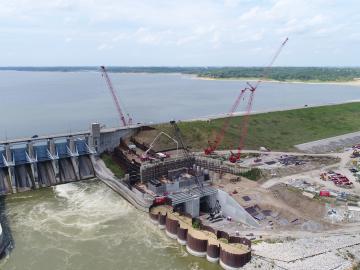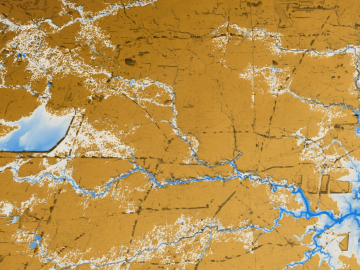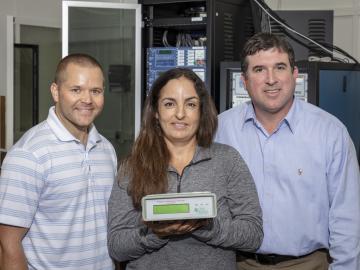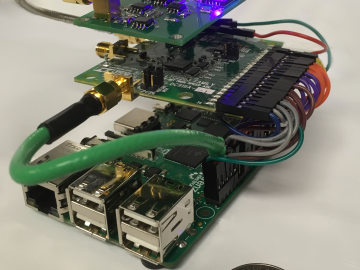
Filter News
Area of Research
- Advanced Manufacturing (1)
- Biology and Environment (7)
- Computational Engineering (1)
- Computer Science (3)
- Electricity and Smart Grid (1)
- Energy Frontier Research Centers (1)
- Energy Science (34)
- Fusion and Fission (2)
- Isotope Development and Production (1)
- Isotopes (2)
- Materials (16)
- Materials for Computing (6)
- Mathematics (1)
- National Security (1)
- Neutron Science (6)
- Nuclear Science and Technology (1)
- Quantum information Science (3)
- Sensors and Controls (1)
- Supercomputing (10)
News Topics
- (-) Big Data (6)
- (-) Energy Storage (23)
- (-) Grid (13)
- (-) Machine Learning (1)
- (-) Nanotechnology (19)
- (-) Quantum Science (15)
- (-) Space Exploration (8)
- 3-D Printing/Advanced Manufacturing (32)
- Advanced Reactors (3)
- Artificial Intelligence (8)
- Bioenergy (15)
- Biology (24)
- Biomedical (15)
- Biotechnology (5)
- Buildings (13)
- Chemical Sciences (7)
- Clean Water (9)
- Composites (9)
- Computer Science (44)
- Coronavirus (10)
- Critical Materials (6)
- Cybersecurity (8)
- Environment (42)
- Exascale Computing (2)
- Frontier (4)
- Fusion (13)
- High-Performance Computing (19)
- Isotopes (18)
- ITER (4)
- Materials (32)
- Materials Science (34)
- Mathematics (1)
- Mercury (4)
- Microscopy (15)
- Molten Salt (4)
- National Security (7)
- Neutron Science (30)
- Nuclear Energy (19)
- Physics (12)
- Polymers (10)
- Quantum Computing (5)
- Security (10)
- Statistics (1)
- Summit (11)
- Transportation (28)
Media Contacts

A new Department of Energy report produced by Oak Ridge National Laboratory details national and international trends in hydropower, including the role waterpower plays in enhancing the flexibility and resilience of the power grid.

A new tool from Oak Ridge National Laboratory can help planners, emergency responders and scientists visualize how flood waters will spread for any scenario and terrain.
![2018-P07635 BL-6 user - Univ of Guelph-6004R_sm[2].jpg 2018-P07635 BL-6 user - Univ of Guelph-6004R_sm[2].jpg](/sites/default/files/styles/list_page_thumbnail/public/2018-P07635%20BL-6%20user%20-%20Univ%20of%20Guelph-6004R_sm%5B2%5D.jpg?itok=hUSyvkP0)
A team of scientists, led by University of Guelph professor John Dutcher, are using neutrons at ORNL’s Spallation Neutron Source to unlock the secrets of natural nanoparticles that could be used to improve medicines.

As Puerto Rico works to restore and modernize its power grid after last year’s devastating hurricane season, researchers at Oak Ridge National Laboratory have stepped up to provide unique analysis, sensing and modeling tools to better inform decisions.

Oak Ridge National Laboratory scientists have devised a method to control the heating and cooling systems of a large network of buildings for power grid stability—all while ensuring the comfort of occupants.

An Oak Ridge National Laboratory-led team used a scanning transmission electron microscope to selectively position single atoms below a crystal’s surface for the first time.

Scientists at the Department of Energy’s Oak Ridge National Laboratory induced a two-dimensional material to cannibalize itself for atomic “building blocks” from which stable structures formed. The findings, reported in Nature Communications, provide insights that ...

Qrypt, Inc., has exclusively licensed a novel cyber security technology from the Department of Energy’s Oak Ridge National Laboratory, promising a stronger defense against cyberattacks including those posed by quantum computing.

Sergei Kalinin of the Department of Energy’s Oak Ridge National Laboratory knows that seeing something is not the same as understanding it. As director of ORNL’s Institute for Functional Imaging of Materials, he convenes experts in microscopy and computing to gain scientific insigh...

A new microscopy technique developed at the University of Illinois at Chicago allows researchers to visualize liquids at the nanoscale level — about 10 times more resolution than with traditional transmission electron microscopy — for the first time. By trapping minute amounts of...


